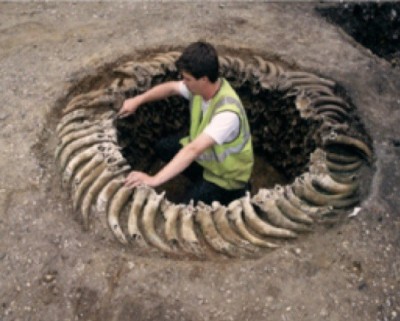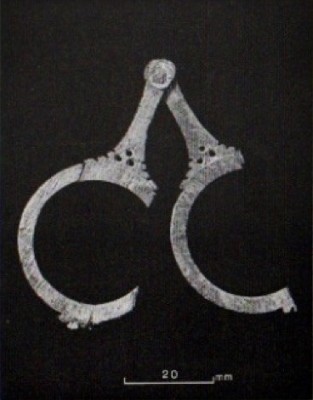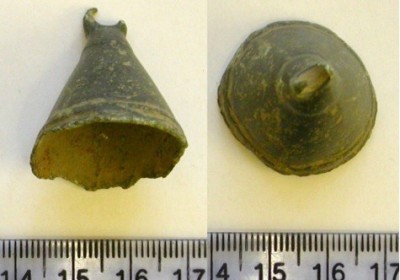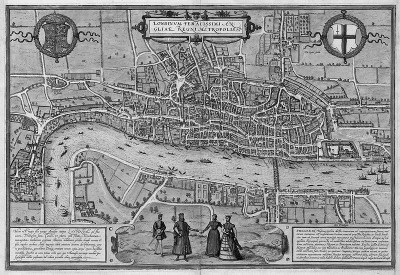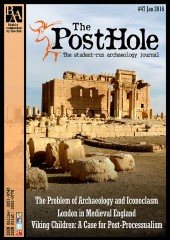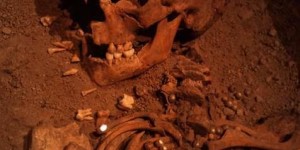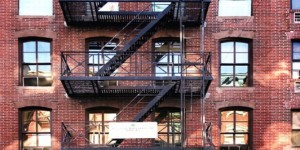Understanding medieval London can be a struggle, and poses a rather difficult picture for archaeologists. Although the archaeological evidence is usually good in confines of the medieval London walls, and is in especially good condition along the Themes, due to the waterlogged conditions to the sites, which has provided excellent evidence for craft and industry in Medieval London. The evidence in the inner London boroughs is sporadic and variable, with few substantial remains, often due to the Victorian and Georgian cellars which destroyed layers of earlier archaeology. There are certain medieval industries for which archaeological evidence is particularly abundant, including stone working, metals, pottery and tile, brick, glass, leather, textiles, antler and bone, and wood (Schofield and Vince, 2003, 121). Within modern perspectives, the relationship between towns and industry is so clearly set that it must be constantly remembered that the majority of craft and industry in the medieval period occurred in the countryside. The countryside generally had better living standards than the densely occupied urban landscape, where the majority of workshops were accommodated within the same building as housing (Pearson, 2005, 50). This paper will focus on the finer details of craft and industry in medieval London, and discuss why these artisans located themselves in urban areas.
Why were artisans permitted to practise in towns, rather than in the countryside, where fuel, labour and water would be nearby? Towns provided vital access to trade routes and merchants for their raw materials and finished products (Schofield and Vince, 2003, 121). On the other hand, the cost of property in urban settings was much higher than in the countryside, varying between main and side streets as well as suburbs, and this also affected the location of urban industry (Schofield and Vince, 2003, 121). As land became scarce in urban settlements, narrower plots and space was used to create new buildings and structures. Contemporary shop houses in London often rose three or more stories, accommodating several families, and in central districts plots and buildings were repeatedly divided, leading to fears over the degeneration of neighbourhood quality (Keene in Waller, 2000, 90). Despite these negatives, around 175 specialised trades have been recorded in London (Keene in Waller, 2000, 79), which is a much higher number than anywhere else in the country.
There are certain medieval industries for which archaeological evidence is particularly abundant, including stone working, metals, pottery and tile, brick, glass, leather, textiles, antler and bone, and wood (Schofield and Vince, 2003, 121). However, using archaeological evidence to understand medieval craft and industry can be problematic, given the apparent lack of distinction between work and domestic spaces. Today it might be possible to distinguish amateur from professional industry through the material evidence—evidence of permanent workshops, investment in equipment or the scale of production, for example—but medieval industry is far less clear cut. Artisans of that period would have had a much smaller output in goods, and less investment in equipment than might be seen today (Schofield and Vince, 2003, 121). Consequently, the difficulty lies in demonstrating that a particular activity took place on site, and in ascertaining the scale of that activity.
Organically-based industries often leave very little archaeological material, making them difficult to trace, and sometimes the evidence is only indirect: spindle whorls are a good example. Tanners required large amounts of urine for the preparation and tanning of leather, and often the only archaeological evidence for this is the pots and jugs used as urinals. The leather industry was of great importance within medieval Britain, catering for clothing necessities, agricultural purposes and military purposes (Cherry, 1991, 295). Hides were a waste product from butchery, and tanners had the sole right to purchase, so the tanning industry expanded swiftly during the medieval period (Saltzman, 1923, 172). The discovery of cattle hooves and horns, with the absence of any other bones can be seen as an indicator of tanning (Burns, 2012), the hooves and horns often being left attached to the hides, as they were all waste materials of butchery (Burns, 2012). At Long Lane, Southwark, an excavation in 2002 uncovered a concentrated region of tanning activity, suggesting a continuation of tanning in the area with evidence dating to the post medieval period due to the discovery of horn core lined pits (see Figure 1; McKinley, 2006). The location of a tannery is often determined by a nearby stream or river, source of cattle and oak trees—the raw materials needed for tanning—and it would mostly likely be located on the edge of a settlement due to the noxious nature of tanning. The Southwark site, having sources for cattle and bark, and also being near water, saw continuation of the industry into the medieval period (Keene in Waller, 2000, 83).
Bone, as another butchery by-product, was likewise an important animal product used in medieval crafts. This craft is often apparent from manufacturing debris, such as shoulder blades with holes sawn out of them, and also from indirect evidence such as the tools used (Schofield and Vince, 2003, 132). Specialist bone workers often paired up with other artisans to create products, for example bone spectacle frames from the 15th-century (see Figure 2; Blair, 1991, 152).
Documentary sources for the fur industry show that the majority of pelts were imported from Scandinavia and the Baltic. However, archaeological evidence for this trade is limited, and these sources are the only substantial evidence that furs were imported from the continent. The occasional discovery of bones from extremities of fur-bearing mammals does support the historical sources: such bones were sometimes left on the pelt after skinning as a guarantee that the fur was genuine (O'Connor, 1991, 259). There has been evidence for such crafts at Aylesbury and at York (Jones, 1983; O'Connor, 1991, 256).Similar to the fur industry, antler was used in numerous industries (MacGregor, 1991). In the early medieval period it seems to have been mostly used for the production of combs, but the comb industry later moved on to the use of wood and the importance of antler declined (Schofield and Vince, 2003, 133). There is a clear over-representation of antler in urban archaeological deposits in comparison to deer bones, therefore suggesting that antler was important to urban settlements as a raw material for artisans.
Cattle horns were also used for numerous industries, including the manufacture of combs, lanterns and windows (MacGregor, 1991). Horn, however, rarely survives except in anaerobic conditions, and when it does survive it is difficult to identify the origin of the horn. Yet deposits of horn cores are a relatively common find (see figure 1), especially in early post-medieval settings, as the horn core is often all that survives as a waste material of horn production, in which the entire horn is boiled in order to remove the horn from its core. Tanneries and horners are often found in close proximity as they both used a by-product of butchery.
The weaving industry used wool as the main raw material to weave cloth, and due to the importance and value of wool there are numerous documentary sources which describe the organisation the industry (Crowfoot et al, 1992, 15). There are several distinct stages within this industry, from wool collection to tailoring, often coinciding with changes in location and artisan (Miller and Hatcher, 1995, 93-127), and each stage has its own archaeological 'type fossils' (Schofield and Vince, 2003, 133). Interestingly, the tanners, leatherworkers, weavers and woolmen were the only organic product industries to have had guilds, perhaps due to the importance of their industry to the city of London.
In comparison to organic industries, the archaeological evidence for non-organic industries, from tools to finished products, is vast. A large range of raw materials were extracted from the ground, and although the majority of such material was used for building, numerous smaller artefacts, for use in the home or for personal ornaments, survive. Evidence from London shows that the raw materials were most often transported into towns to be worked: St. Alban's house, for example (Pritchard, 1991, 154). Despite the inability to identify where the shale was mined, it has been suggested that the source was either Kimmeridge (Dorset) or Whitby (Yorkshire), indicating the transport of raw materials over a vast distance (Schofield and Vince, 2003, 124). Amber was also a widely sought after material, and evidence of bead manufacture has been found across London, for instance at Baynard's Castle (Schofield with Maloney, 1998, 256). Stone mortars were an essential part of a medieval kitchen for grinding herbs, spices and medicines, but also used in conjunction with other industries, for example for grinding the bark used during the manufacture of leather (Schofield and Vince, 2003, 125). There is little archaeological evidence for the creation of stone mortars, so it has been suggested that these vessels were finished at the quarry site (Dunning, 1977, 326). A final use of stone within urban settings was the creation of lime mortar, and numerous medieval lime kiln sites have been identified in towns (Baker et al. 1979, 46). Limestone kilns are usually situated on the outskirts of urban settlements, with access to running water, which was a necessary component of the process.
Blacksmithing and the creation of iron objects was commonly carried out in urban areas, but archaeology is currently unable to identify the scale of the industry due to soil conditions (Geddes, 1991). The smelting of iron was mostly carried out in rural rather than urban areas, due to the location of the ore (Evans and Davison, 1985). Smelting produces large amounts of ‘slag’ which is commonly found on archaeological sites: for example, in Cheapside, London, 250kg of industrial slag was excavated in a small 10th or 11th century building, perhaps suggesting a concentration of the iron industry in the area (Hill and Woodger, 1999, 37). Slag is the most common waste product of metalworking, and is often found in the form of 'hearth bottoms' which were formed when molten slag pooled up during the smelting process. Another frequent find on ironworking sites are tuyeres, conical cubes of clay which were wrapped around the nozzle of bellows to protect them from heat (Schofield and Vince, 2003, 126). Offcuts of metal are also found, and can be used to help distinguish between metal casting and the working of sheet metal (Schofield and Vince, 2003, 137). Such archaeological evidence can help advance the understanding of manufacturing processes.
Copper alloys were produced from a mixture of copper, zinc, lead and tin, all of which were imported into London in the form of ingots, either as a ready mixed alloy, or as a pure metal. Excavations do sometimes uncover unused metal ingots: for example, a 12th century pit in London contained a number of lead ingots, perhaps ready for use in the production of artefacts from lead or pewter, a lead alloy (Schofield and Vince, 126). However, archaeological evidence of raw materials usually comes in the form of small off-cuts of ingots and moulds from the production of the ingots themselves (Blair et al, 1991, 59). From the twelfth century onwards there had been a prosperous industry in producing pewter tableware objects in central London. However, few artefacts survive, possibly due to the fact that pewter objects are easily melted down to make new ones (Gaimster, 1987, 347). An excavation at Moorgate in 1999 uncovered large amounts of slag, furnace lining, crucibles and the moulds for copper-alloy casting dating from the twelfth century. As the area was seen as unsuitable for residential purposes due to the nearby Walbrook Stream, it may represent an industrial centre, with large scale craft production occurring on the site (Murray and Liddle, 2003, 89).
Metalworking is perhaps the most distinct of the medieval industries, due to the numerous crafts and specialisms within metalworking and the large number of workers who were involved. Where Aldermanbury met London Wall Street, 2.4m thick deposits of medieval slag and bronze waste were recorded, the depth of the deposit suggesting long term or large scale metal working in the area (Schofield with Maloney, 1998, 30). The objects which were made and sold in this area ranged from buckles to candlesticks, copper bells for harnesses (see fig. 3) to copper bells for churches and monasteries, items which were then sold all over the country (Schofield, 2011, 144). Bell casting required the digging of a large pit in which the clay mould could be made. These pits are usually located near the church where the bell was to be hung, rather than at a bell-founders workshop. Such workshops are instead usually identified through the vast quantities of bell mould, metal scrap found at a site. However, due to the reuse of bell moulds, crucibles and slag as hard core or metalling, the discovery of bell moulds is not sufficient evidence to prove the existence of a foundry site (Schofield and Vince, 2003, 140).
Metalworking was not an industry for the heart of London: evidence from Poultry suggests that in the 12th century it had been a thriving area of metalworking for two centuries previous, yet by the early 13th century the area had again changed. The artisans who made the products seem to have relocated elsewhere, but the shops which sold the finished products remained, particularly specialising in the sale of armour (Schofield, 2011, 144). The forges had begun to move to more marginal areas of the city (Freshwater, 1996, 42) and the areas of production and sale were topographically separate, presumably due to the price of rent in Poultry and nearby areas (Schofield, 2011, 144). This also coincided with 12th century fears of fire, with new regulations implemented in an attempt to lower the risk of such a disaster. The majority of metalworking industries had their own guilds, perhaps partly due to the considerable trade they brought to the city but also as the industries were highly specialised and were not open to the poorer classes.
Although potters play an archaeologically important role due to the proliferation of ceramics, they seem to have held a low status in medieval London: they are hardly mentioned in historical records, and the potters never had a guild (Schofield, 2011, 126). Archaeological evidence has therefore provided the basis for the modern understanding of the industry and how it fitted into the medieval landscape. Ceramic vessels were mostly used for cooking and dining, with more elaborate vessels being found for elite tableware (Thomas, 2001, 120). The numerous different ceramic typologies that have been created demonstrates the large number of different wares and pottery fabrics that were used in London (Schofield, 2011, 127). The lack of records for ceramic production in London is perhaps due to the larger scale pottery industry in rural areas, and pottery was certainly imported from the Thames Valley region and the Surrey-Hampshire border area.
In comparison to the Roman period, glass-making was a relatively rare industry across the urban areas until the end of the medieval period (Charleston, 1991). The majority of window glass was imported from Flanders in the 14th and 15th centuries, despite the fragility of the glass. Schofield and Vince (2003, 139) suggest that perhaps there was less danger of breakage by transporting such materials over sea than by cart. Yet there is archaeological and documentary evidence to show that glass was made in the British Isles, with raw materials being imported from the continent and beyond. The technology of making glass in the medieval period produced poor quality glass in comparison to the large quantities of Roman glass that survives. Manufacturing methods had not advanced enough to create blue and red coloured glass, and documentary sources indicates that blue glass objects were often created by melting down blue Roman glass (Biddle and Hunter, 1990, 357). The raw materials required for glass making perhaps required that the majority of glass making was located in rural wooded area with easy access to the wood, quartz sand and alkali needed. However, glass making does begin to occur in urban settlements from the 16th century onwards, when the replacement of stone vessels with glass bottles created a mass market for glass products and saw the industry becoming identified with towns (Schofield and Vince, 2003, 128).
Archaeological evidence has provided us with details of how urban crafts and industries were organised in towns. However, a difficulty arises when attempting to identify the difference between domestic or professional crafts, as discussed above. For example, baking was carried out on a domestic scale in most homes, but identifying whether an oven was that of an individual or a professional is challenging. It could be argued that the largest ovens represent professional bakers, and the smaller ovens individuals, but this may be too simplistic. Other crafts could have been undertaken on a part time basis if the raw materials were inexpensive, and therefore care must be taken when interpreting archaeological sites. For instance, the re-melting of glass or the casting of lead may have been undertaken within an urban tenement rather than at a purely industrial site (Schofield and Vince, 2003, 143).
Social topography was shaped by commerce and fabrication: artisans and merchants occupied street frontages, whereas the poorer populace lived in alleys, rented rooms or on the edge of the city. In contrast to rural settlements, both rich and poor lived in close proximity due to the intricacy of the markets, yet still in distinct niches (Keene in Waller, 2000, 93). Town planning can be inferred from regular features in street plans and property boundaries. In large towns, laid out as centres of trade in the late 9th and 10th centuries, a wide central market street was common, with side streets running off almost creating a grid pattern. Narrower lanes served the back of the properties on the market street. Elements of this patterning can be detected in London’s complex plan (see fig. 4).
The location of crafts and industries within London was dependant on numerous factors, and was often dictated by guilds and corporate regulations. Artisans were bound by these rules and regulations, but what archaeology has shown is that these crafts and industries were regularly relocated and never located in one place for long. Smoky or smelly industries such as metal foundries and tanneries were often located on the periphery of urban settlements. Distinct zoning occurring where industries were located with others using the same raw materials or needing running water (Keene in Waller, 2000, 85). For example, in the 11th century the streets off Cheapside were occupied by workers in metals and bone, with the gold-working quarter on the streets nearby. This zoning is also sometimes evident from street names and from the industrial waste which may remain. It can be argued that a symbiotic relationship existed between certain industries, such as horn workers and tanners who shared raw materials. Both would have been located near butchers to take advantage of the waste from butchery (Schofield and Vince, 2003, 144). Tanners may also have been located near carpenters, as the bark from carpentry waste could be used by the tanners. On the other hand, some industries may have been intentionally separated, perhaps due to the fire risk posed by smithing and smelting. There are also records of industries such as dyers polluting the river, which then meant that other industries were unable to use the water, so the guilds dictated where industries could locate, and placed dyers downstream from those who needed purer, unpolluted water.
Guildhalls served multiple functions, and were built and used by several associations. After the Reformation, artisans appropriated a number of religious halls. These guilds acted as ‘shadow governments’ to administer commerce inside the city, controlling those who could practice and the price of the goods they sold (Giles, 2005, 299). Guilds are understood to have encouraged their members’ social and economic development through guild activities, and instituted strict moral codes, credit networks and business relationships to protect values and monopolies. Some guilds had more power and influence than others; the goldsmith’s guild was a particularly influential guild in London.
There are parts of London’s medieval history that are gone forever, destroyed by building work in the Georgian and Victorian period. Archaeology cannot illuminate these, which leaves a puzzle to piece together with many pieces missing. Despite this, it is clearly to be seen that the crafts and industries of medieval London located themselves dependant on the raw materials available, the resources needed to build or craft their finished product and the ever important trade routes. The latter certainly provided artisans with a clear reason to locate to London rather than perhaps York or Winchester. With London becoming an increasingly dominant export zone in England, it is apparent that artisans understood the power of being positioned in or near the city. The availability of raw materials is perhaps more complicated: often the raw materials are imported into the cities, which leaves the question of why industries were not simply located in rural areas where the raw materials would be cheaper and easily accessible. This essay argues that the move to urban areas was to take advantage of export opportunities and the protection which guilds offered craftsmen and artisans. These guilds were gaining increasing power within corporate London, able to dictate prices, goods sold and the practitioners themselves. Again, when looking at the resources needed this creates an interesting picture. For example, industries often needed water, but locating industries by the Thames was expensive and difficult as there was simply not enough space for every industry to be located by the waterfront. Several artisans simply found it easier to locate themselves in rural areas, or within villages surrounding London. What this shows, is that although these industries understood the importance and pull of London, they also understood the difficulties of attempting to fight for prime locations within London itself.
Bibliography
- Baker, D., Baker, E., Hassal, J., Simco, A., 1979. Excavations in Bedford 1967-1977. Bedfordshire Archaeological Journal. 13.
- Biddle, M., and Hunter, J., 1990. Early Medieval Glass. Oxford University Press: Oxford
- Blair, J., Ramsay, N. 1991. English Medieval Industries. Hambledon Press: London
- Burns, C., 2012. The Tanning Industry of Medieval Britain. The Collegiate Journal of Anthropology [online] available at: http://anthrojournal.com/issue/october-2011/article/the-tanning-industry... [last accessed 10/12/2015]
- Charleston, R., J., 1991. Vessel Glass (in Blair and Ramsay, 1991)
- Cherry, J., 1991. Steelyard Weights (in Salisbury and South Wiltshire Museum medieval Catalogue). Salisbury and South Wiltshire Museum: Salisbury
- Crowfoot, E., Pritchard, F., Staniland, K., 1992. Textiles and Clothing c 1150- c 1450. HMSO: London
- Dunning, G., C., 1977. Mortars. Society for Medieval Archaeology. Monograph 7.
- Evans, D., H., with Davidson, A., 1985. Excavations in Botoloph Street and St. Georges Street. East Anglican Archaeology Report 26
- Gaimster, D., 1987. Pottery production in the Lower Rhineland: the Duisburg sequence 1400-1800. British Archaeological Reports International Series 44: Oxford
- Geddes, J., 1991. Iron (In Blair and Ramsay, 1991).
- Hill. J., and Woodger, A., 1999. Excavations at 72-75 Cheapside. Archaeology Studies Series 2. Museum of London Archaeology Service: London
- Jones, G., C., 1983. The Medieval Animal Bones. Record of Bucks.
- Keene, D., 2000. The English Urban Landscape. Ed. Waller, P., Oxford University Press: Oxford.
- MacGregor, A., 1991. Antler, Bone and Horn (in Blair and Ramsay, 1991).
- McKinley, J., 2006. Excavations at 211 Long Lane, Southwark Part II; Romano-British pasture to post-medieval tanneries. London Archaeologist [online] available at: http://archaeologydataservice.ac.uk/archiveDS/archiveDownload?t=arch-457... [last accessed 10/12/2015]
- Miller, E., Hatcher, J., 1995. Medieval England: Towns, Commerce and Crafts. Longman: Harlow
- Murray, J., Liddle, J. 2003. Medieval industry in the Walbrook valley. London Archaeologist [online] available at: http://archaeologydataservice.ac.uk/archiveDS/archiveDownload?t=arch-457... [last accessed 10/12/2015]
- O’Connor,T., 1991. Bones from 46-54 Fishergate. The Archaeology of York 15/4. York Archaeological Trust: York
- Pearson, S., 2005. Rural and Urban Houses 1100-1500. Maney: Leeds
- Pritchard, F., A., 1991. Small Finds (in Vince), 120-278
- Salzman, L. F., 1923. Medieval English Industries. Clarendon Press: Oxford
- Schofield, J., 2011. London 1100-1600. Equinox Publishing Ltd: Sheffield
- Schofield, J., with Maloney, C., 1998, Archaeology in the City of London 1907-9. Gazetteer, Series 1. Museum of London
- Schofield, J., Vince, A., 2003. Medieval Towns. Continuum: London
- Thomas, C., 2002. The Archaeology of Medieval London. The History Press: London.


